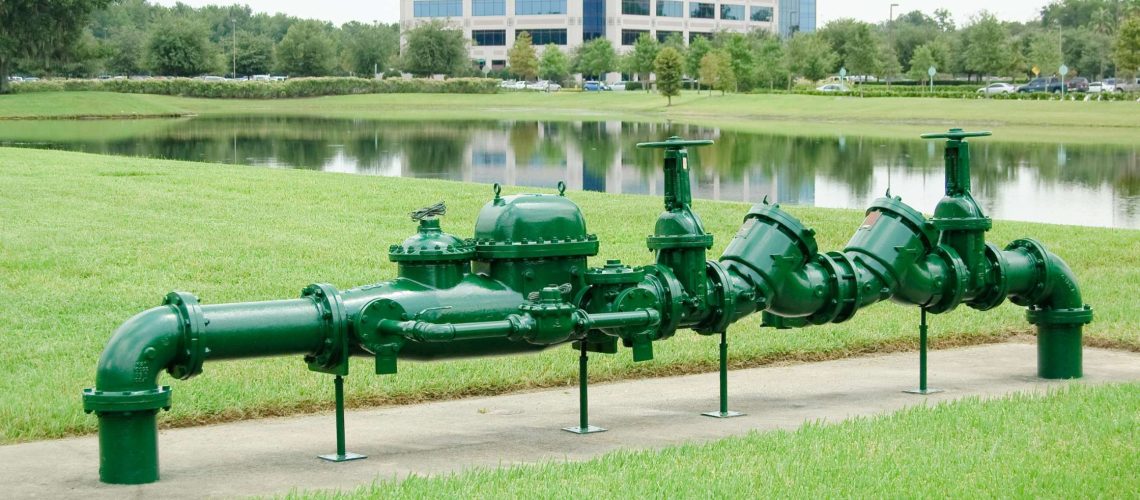Are you concerned about protecting your plumbing system from contamination? Installing backflow preventers is a great way to do it! Did you know that over 80 percent of all plumbing systems in the United States use backflow preventers? These devices are designed to stop contaminated water from flowing back into the main water lines, keeping your water supply safe and clean.
In this article, we’ll discuss five different types of backflow preventers, their benefits, installation and maintenance requirements, common problems, and regulations. So if you’re looking for an effective and efficient way to protect your plumbing system, read on and learn all about backflow preventers!
Types of Backflow Preventers
There are various types of backflow preventers available, each designed to protect your water supply from contamination.
There are air gap, pressure vacuum breaker, double check valve, and reduced pressure zone backflow preventers, all of which have different functions and require different levels of maintenance.
Proper installation, according to local regulations, is essential for ensuring that the backflow preventer functions properly.
Regular maintenance and inspections are also important for preventing any contamination of the water supply.
It’s important to note that backflow preventers aren’t one-size-fits-all solutions and it’s important to choose the one that best meets the needs of your home or business.
Benefits of Backflow Prevention
You can benefit greatly from the installation of a backflow preventer. These devices are important to ensure water supply safety, and they help prevent contaminants from entering the mains.
Here are some of the advantages of using backflow prevention techniques:
- Protects public health: Backflow prevention devices help ensure that the water supply doesn’t become contaminated by pollutants.
- Prevents water loss: Backflow prevention methods help reduce water waste and prevent other sources from entering the water supply.
- Cost-effective solution: Backflow prevention solutions are cost-effective, as they’re long-lasting and require minimal maintenance.
- Saves time and energy: With the right backflow prevention devices, you can save time and effort in the long run.
- Enhances water quality: By preventing contaminants from entering the water supply, backflow prevention helps maintain high-quality water for all.
Installation & Maintenance of Backflow Preventers
To ensure proper functioning of backflow preventers, it’s important to understand the installation and maintenance process.
When installing a preventer, it’s essential to read the manufacturer’s instructions and follow all safety guidelines. After installation, it’s important to perform regular maintenance and troubleshooting to identify any issues.
For larger projects, certifications may be required from a certified technician. Lastly, regular inspections can help ensure that the backflow preventer continues to meet the necessary standards of safety and performance.
With the right knowledge and proper installation and maintenance, a backflow preventer can be a reliable and long-lasting piece of equipment.
Common Backflow Prevention Problems
Despite their reliability, backflow prevention systems may still encounter some common problems. These issues can vary depending on the type of device being used and the environment it’s in. Troubleshooting these issues can require specialized knowledge and techniques.
Common backflow incidents include: clogged valves, leaking valves, misaligned or damaged parts, and air in the lines. Backflow prevention devices must be inspected regularly to identify and prevent such issues.
Additionally, backflow prevention techniques must be used to ensure proper function. Techniques like pressure testing and flow testing can help detect potential issues.
Regulations for Backflow Prevention
Regulating backflow prevention is essential to ensure the safety and effectiveness of these devices. Backflow prevention standards are put in place by governing bodies to guarantee the quality and integrity of water supply systems.
It’s important to understand the importance of backflow prevention and the various regulations that are in place. Backflow prevention devices are designed to protect against the backflow of contaminated water into the potable water supply. These devices must be regularly tested and maintained in accordance to backflow prevention regulations.
There are various backflow prevention methods, such as double check valves, reduced pressure zone valves, and atmospheric vacuum breakers, that can be implemented depending on the specific needs.
It’s important to understand the regulations for backflow prevention to guarantee a safe and effective water supply system.
Backflow preventers are essential in protecting your plumbing system from contamination.
There are several types of backflow preventers, each with their own benefits, and installation and maintenance needs.
It’s important to understand the regulations and common problems associated with backflow prevention to ensure your system is operating safely and efficiently.
With the right backflow preventer in place, you can rest assured your plumbing system is protected and your water supply is safe. Trust South Florida Services & Supply for all your backflow preventers needs.

